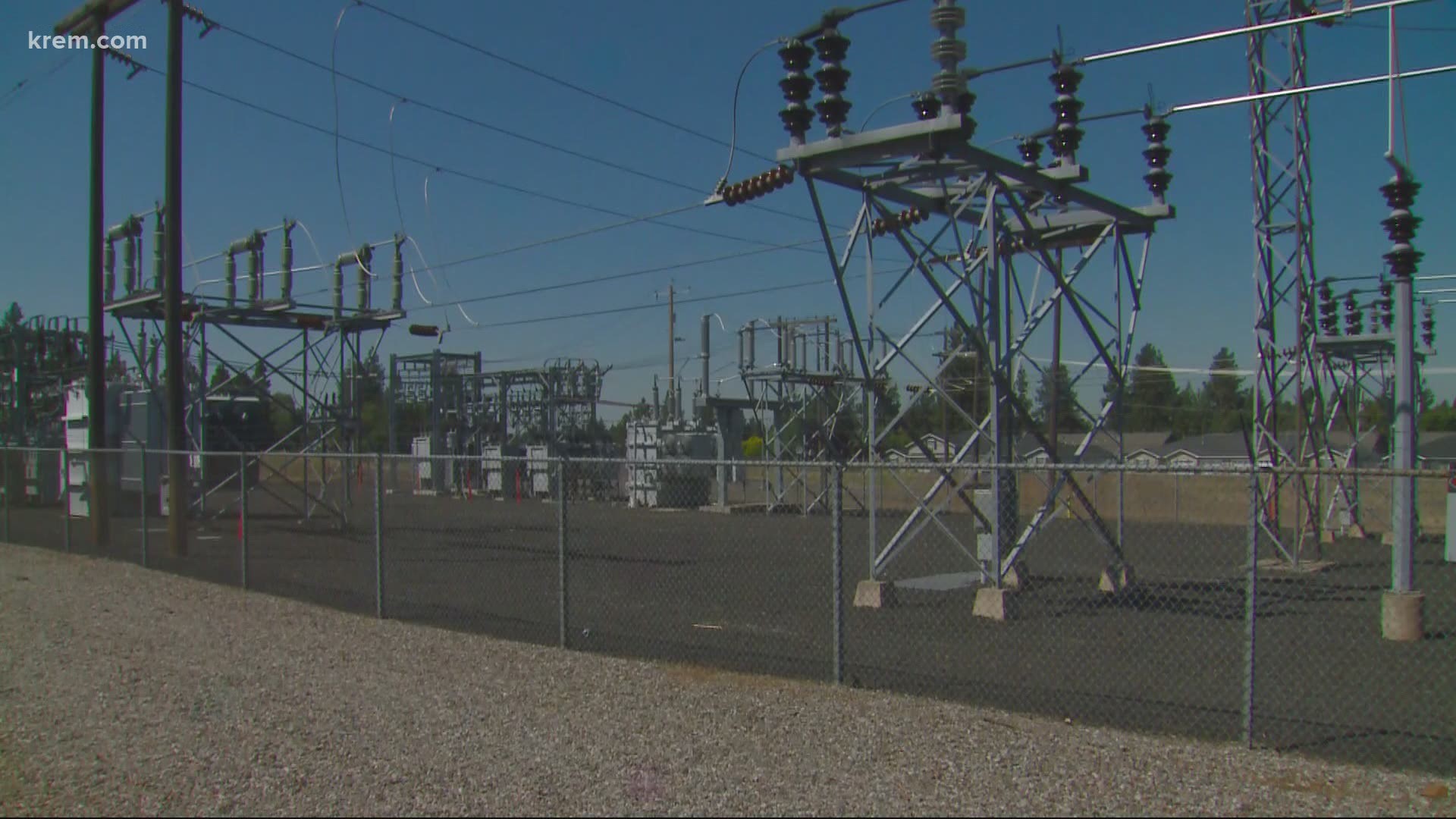SPOKANE, Wash. — Due to record-shattering heat, Avista began enacting what are effectively managed, rolling blackouts on Monday in order to prevent catastrophe to the electrical grid.
But these rolling blackouts in Spokane are different in reason and manner than the blackouts in Texas and California that have generated nationwide attention in the past year.
In Texas last winter, freezing temperatures drove up demand for power. But the companies there didn’t have enough supply to meet that demand. So, they systematically cut power to neighborhoods on a rolling basis to lower demand on the system. The idea was that basically everyone would share some of that burden.
It was a similar situation in California last summer, where high heat drove up demand. Again, the rolling blackouts were universal; they were intended to affect basically everyone regardless of their individual conditions or power usage.
Both cases were a problem of not enough electricity to meet the demand. But that is not the case here in Spokane. We have plenty of supply right now.
In fact, demand isn’t that high compared to demand in the winter (heating tends to use up a lot more power than does air conditioning).
So if supply isn’t an issue, why do we need blackouts?
When the power transformers in your neighborhood get too hot, they trip off the way a circuit breaker would, to basically prevent them from exploding. And right now they’re getting too hot for two reasons.
One, even though demand isn’t high compared to wintertime, it’s extremely high for June. Avista has called it unprecedented demand. And using all that power basically heats up the inside of the transformers.
Then two, on top of that, there's heat coming from the sun on the outside of the transformers. That stress is also unprecedented.
The combination is causing some transformers to trip off.
RELATED: Avista 'targeted' power outages in Spokane, Idaho: How long they will last and when they could happen
When that happens it can take hours or even days to fix, so Avista wants to prevent that tripping mechanism from happening. To do that, they’re watching all their transformers to see which ones are in danger of overheating, and when a specific transformer reaches a certain point, they’re shutting it off for a shorter period of time. They're aiming for an hour or less, just to cool it off.
That means this is not a scenario where everyone has to share some of the burden. The blackouts will only be happening in neighborhoods where transformers are overheating.
That in turn means some areas may see multiple blackouts while some may see none at all. And the factors involved in that can range from how hot those areas are, to how much electrical demand they’re creating, to how recently the systems were upgraded.
Avista says blackouts could continue as long as temperatures and electric demand both remain this high.

